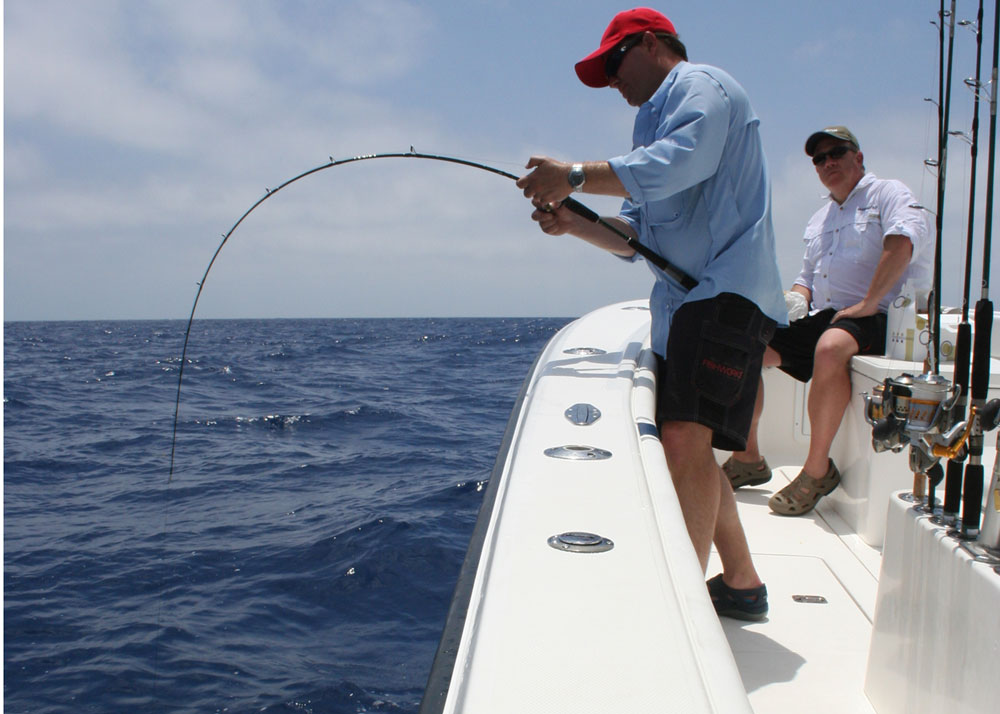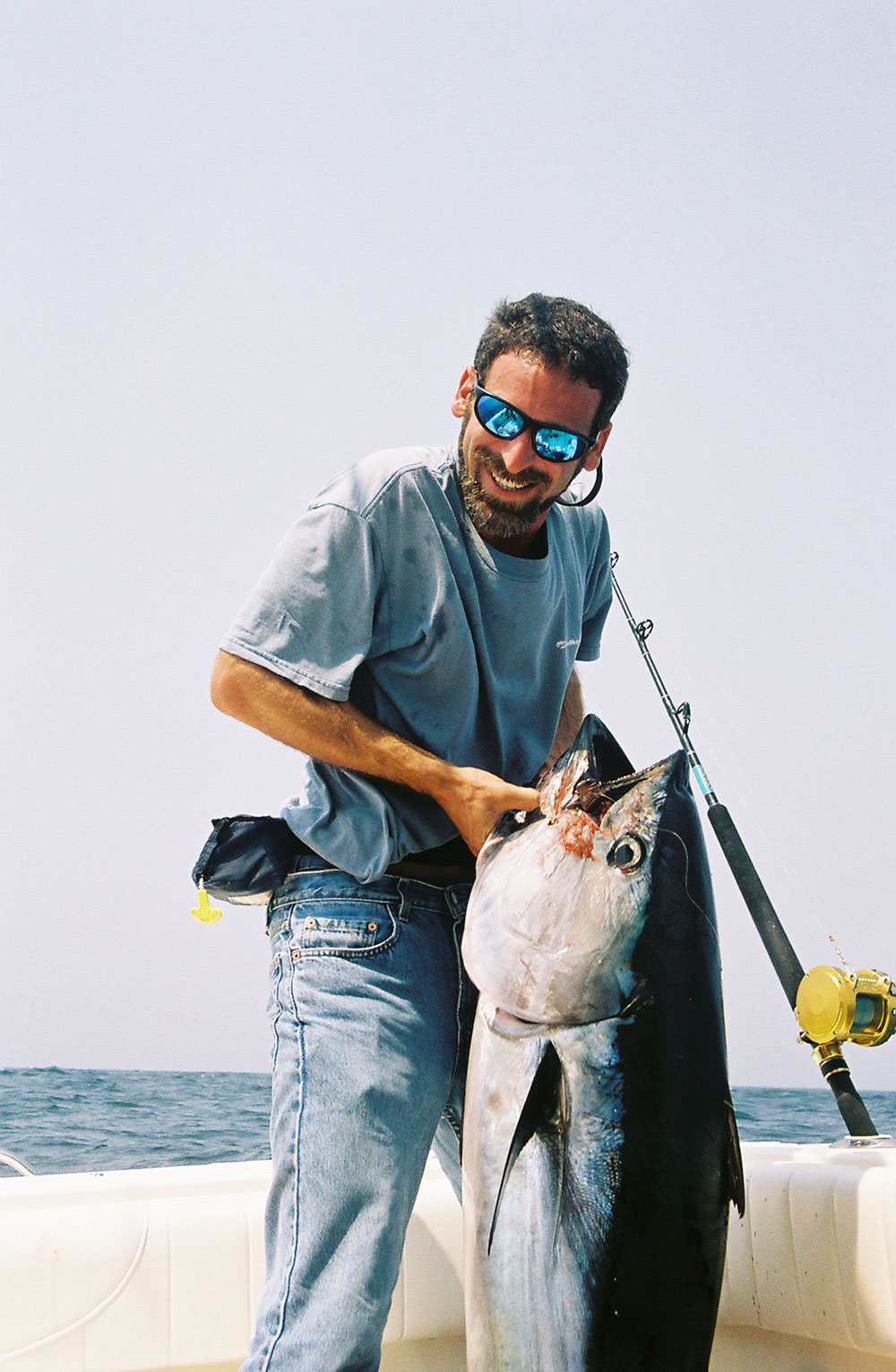A properly set drag is what stands between your fish, and a break-off. But few people set their drags properly, or even understand the nuances of how the drag’s setting affects your level of success. In fact, most of us simply grab the line, give it a yank, and set the drag where we figure it’s “about right”.

The biggest mistake people make when they think about how a reel’s drag works is believing they’ve set it at a particular level, and there it stays. Not so. As the line runs off a reel, the spool becomes smaller. As its diameter shrinks the effective drag setting constantly increases. Think of it like mechanical gearing—reducing the spool’s diameter means it takes more force to make it turn. So a drag you yanked on with a full spool will be much harder to yank after a fish has stripped half the line off of it.
The second misbelief people have is that when they grab the line just above the reel and pull, that’s the amount of tension it will take for a fish to strip line. Not even close—we’ve forgotten to account for friction. As the line runs through the guides of a rod bent under tension, there’s a significant amount of friction taking place, and that also increases how much force needs to be applied to get the spool turning. But don’t take our word for it. Try grabbing the line beyond your rod tip, pull down so there’s an arc in the rod, and you’ll see for yourself just how much harder it is to get the spool moving than it is when you grab the line right in front of the reel.
How to Set a Fishing Reel Drag
To properly set a drag, you need to hold the rod in a fish-fighting position and pull from a distance—with a scale, not with your hand. This is best done with a buddy holding the scale, but you can also secure it to a fence post or a tree, loop your line around the scale’s hook, back off 10 or 12 feet, and faux-fight a fish. (Note: do not try this indoors, as a snapped line will result in a broken rod tip and a hole in the ceiling drywall. Trust us on this). Putting tension on the drag in this way will give you an accurate idea of just how many pounds of pressure it takes for a fish to peel line.
According to traditional theory, drags should be set to between one quarter and one third of the line’s rated breaking strength. Why such a small fraction of the pound-test? To account for changing spool diameter, all that friction we talked about, and weak links like knots and terminal tackle. And yes, traditional theory is correct, in this case. If you feel your line is in ideal shape and your knots are perfect, lean towards a third. If you’re fishing in an area or with a style where line-chaff is a possible issue or if you’re not 1000% confident in your connections, tilt towards one quarter.
There’s one more curve-ball to throw into the equation: most lines are not accurately rated. Manufacturers will often stamp “20 pound test” on line that really breaks at 25 pounds, so that we consumers think “gee, this is really strong line,” and buy it again. So if you want to have a properly set drag, you’ll need to first test the actual breaking strength of the line you’ve spooled up with.
Wait a sec—right about now many people are thinking “well, I always have set my drags by hand and it’s never been an issue.” That may be true, but if you’ve never broken off during a knock-down, drag-out fight, we think you need to spend more time studying FishTalk and learning how to hook into bigger fish. Break-offs happen to anyone who hooks large fish on a regular basis, and it’s that “one that got away” hook-up where having a perfectly-set drag really makes a huge difference. For you light-tackle guys, whether you’re targeting stripers on 12-pound test or yellowfin on 30-pound test, having that drag set just so is all the more important.

This topic is also a good argument for spending more money on top-quality gear (view the reviews in our Gear section, to get the scoop on a number of different reels). Cheap reels simply don’t have drags with the same smooth nature of more expensive reels. If you hook into a monster on an el-cheapo reel and that drag heats up, it’ll become jerky and apply pressure at an uneven rate. Your drag will be jumping between X and Y pounds of pressure with every rotation of the spool, right up until your line snaps.
Another good argument made by the whole drag issue is one for constant maintenance, particularly when it comes to spinning reels. All reels need regular cleaning to be sure no grit or grime has invaded the system. But spinning reels have an additional friction point on the line roller. In fact, the line roller often won’t even turn on a reel that hasn’t been given adequate attention.
Okay: are you ready to go out in search of that new record-breaking catch? Fantastic. But before you make a single cast, ensure that your drag is properly set. It’s one important way you can make sure your fishing life goes a lot more smoothly.
TIP: To assess the condition of a spinning reel’s line roller, see-saw a rubber band across it. If there’s any noticeable resistance, you know it needs to be disassembled, cleaned, and lubed.